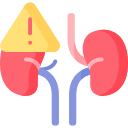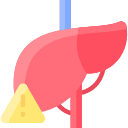NALTREXONE–BUPROPION
THERAPEUTICS
Class
- Neuroscience-based Nomenclature: opioid receptor antagonist and dopamine reuptake inhibitor and releaser
- Opioid antagonist combined with a norepinephrine and dopamine reuptake inhibitor; weight management medication
NALTREXONE–BUPROPION commonly prescribed for
(Bold for FDA approved)
 How NALTREXONE–BUPROPION works
How NALTREXONE–BUPROPION works
• Bupropion increases dopamine and norepinephrine by blocking both the dopamine and the norepinephrine transporters. In the hypothalamus, these 2 neurotransmitters activate POMC neurons, causing the release of POMC. POMC is then broken down into alpha-melanocyte- stimulating hormone, which binds to melanocortin 4 receptors to suppress appetite. However, stimulation of POMC neurons also activates an endogenous opioid-mediated negative feedback loop, which mitigates the appetite-suppressing effects.
• Naltrexone can block mu opioid receptors, thus preventing opioid-mediated negative feedback. Such an action would synergize with simultaneous activation of the appetite- suppressing pathway by bupropion. This results in more robust and long-lasting appetite suppression than with either drug alone.
How long until NALTREXONE–BUPROPION works
• At least 5% weight loss is generally achieved after 12 weeks on maximum daily dose
SIDE EFFECTS
 Notable Side Effects
Notable Side Effects
• Nausea, constipation, vomiting, diarrhea, dry mouth
• Headache, dizziness, insomnia
 Life Threatening Side Effects
Life Threatening Side Effects
• Increased blood pressure or heart rate
• Rare seizures (risk increases with doses above the recommended maximums; risk increases for patients with predisposing factors)
• Hepatocellular injury (at excessive doses)
• Rare induction of mania
• Rare activation of suicidal ideation and behavior (suicidality) (short-term studies did not show an increase in the risk of suicidality with antidepressants compared to placebo beyond age 24)
• Effect on cardiovascular morbidity and mortality has not been established
weight gain

unusual
sedation

unusual
What to do about NALTREXONE–BUPROPION side effects
• Wait
• In a few weeks, switch to another agent
DOSING AND USE
usual dosage range
• 16 mg naltrexone/180 mg bupropion twice per day
 Dosage Forms
Dosage Forms
• Extended-release tablet (naltrexone/ bupropion) 8 mg/90 mg
long term use
• Has been evaluated in controlled studies up to 56 weeks
habit forming
• No
SPECIAL POPULATIONS
 Renal Impairment
Renal Impairment
• Maximum dose is 8 mg/90 mg twice per day in patients with moderate to severe impairment
• Not studied or recommended for use in patients with end-stage renal disease
 Hepatic Impairment
Hepatic Impairment
• Dose adjustment not necessary in patients with mild impairment
• Maximum dose is 8 mg/90 mg twice per day in patients with moderate impairment
• Not recommended for use in patients with severe hepatic impairment
 Cardiac Impairment
Cardiac Impairment
• Not systematically evaluated in patients with cardiac impairment
• Measure blood pressure and heart rate before and during treatment
 Elderly
Elderly
• Some patients may tolerate lower doses better
 Children and Adolescents
Children and Adolescents
• Safety and efficacy have not been established
• Not recommended for use in children or adolescents
 Pregnancy
Pregnancy
• Contraindicated
 Breast Feeding
Breast Feeding
• Some drug is found in mother’s breast milk
• Recommended to discontinue drug or formula feed
Based on data Published online by Cambridge University Press
Compiled by Dr. Jash Ajmera